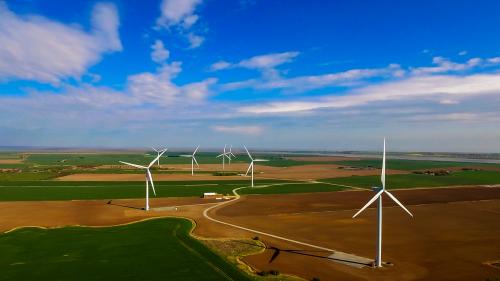Solutions
Our passionate and experienced people deliver successful clean energy projects globally.
Technologies
Driving a clean energy future through state-of-the-art renewable technologies.
See all technologiesResources
Browse our latest resources, including company updates, customer stories, industry insights, and research reports.
See all resourcesCareers
Join a collaborative team of passionate individuals who engage in meaningful, stimulating, and world-changing work.
Learn moreAbout RES
We live our mission, celebrate the people making it happen and transform the way the world produces and consumes energy.
See about usOur offices
Like our business, we’re truly global – but proudly local. Find contact and location details for every RES office.
Contact usSmarter Condition Monitoring Services
by RES | Apr 03, 2023 | Reading time: 2 min

Forty years ago, we started in the industry as a developer/owner which is why we fully understand the importance of being armed with the correct information to make portfolio-wide decisions and action plans to improve performance. In this article, Anthony Birchall, Head of Analysis & Optimisation, discusses the benefits of condition monitoring and how it provides a full picture of asset health for owners.
Condition Monitoring Systems (CMS) are used by OEMs to manage defect and availability warranty obligations. Whilst this information provides benefits for asset managers and owners it isn’t often detailed enough for them to gain a holistic view of the health of assets, which is where independent condition monitoring services come in.
Condition monitoring services involve translating alarms and data trends into targeted and potentially cost saving recommendations for action. As well as the vibration data used by OEMs, it can also include temperature and oil data helping to identify issues related to gearbox, generator and main bearing failures, generator imbalance, high speed shaft misalignment, blade misalignment and more. At RES, we use wind turbine drivetrain data from the CMS and combine this with other data types, for instance SCADA data, to gather a full picture of asset health, enabling short term and strategic longer-term maintenance decisions to be made.
Whereas the CMS has become standard issue for new wind turbine models, this isn’t always the case for older models, which is why we have been retrofitting systems to gather this data.
We have also developed SMART-CMS, a technology agnostic CMS tool that uses standardised turbine health indicators and machine learning to help our analysts dig deeper into the vast amount of data gathered across portfolios with different wind turbine types. The use of this tool helps us to automate and standardise OEM data across large portfolios, giving a single agnostic view of any CMS, which in turn improves our ability to predict failures and determine the remaining lifespan of components. Our system can also give OEMs, who we have very strong relationships with, the ability to improve on availability as the early detection of issues leads to less downtime. We currently use SMART-CMS across 40 sites (1.7 GW) to help generate additional revenue and savings for clients.
On one wind farm, the use of SMART-CMS helped us to identify a serial defect that was affecting over half of the gearboxes. This helped to prioritise those turbines that required immediate attention, avoid unnecessary maintenance and increase production revenue by £100,000. We then continued to support the client and OEM by publishing regular updates to help manage the program of works under warranty, avoiding costly repairs and unplanned downtime while deferring unnecessary repairs on healthy components.
On another site, we used SMART-CMS to successfully help an OEM predict generator failures which in turn helped the owner reduce downtime and increase production revenue by £16,000. We also worked with the OEM to help improve the long-term reliability of the generator, helping to minimise future operational costs.
Condition monitoring is crucial to prolonging the life of the asset and getting as high a yield as possible. It minimises unnecessary downtime by identifying issues early and addressing them through targeted maintenance and forecasting. In addition, the use of technology such as SMART-CMS, ensures that the risk of catastrophic failures is minimised, whilst asset production and revenue is maximised.
Author: Anthony Birchall, Head of Analysis and Optimisation
Read more about our support services.
